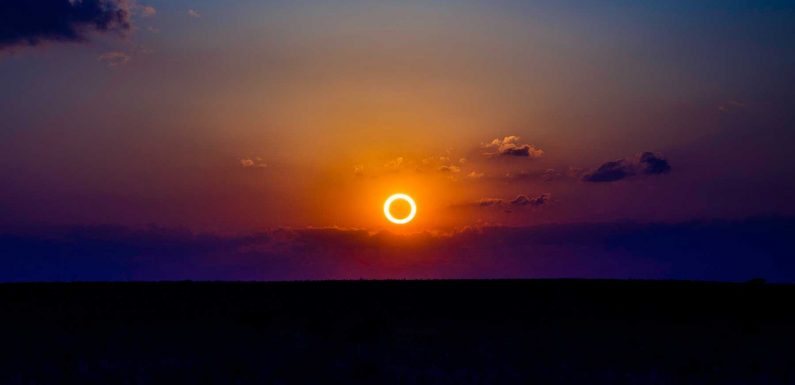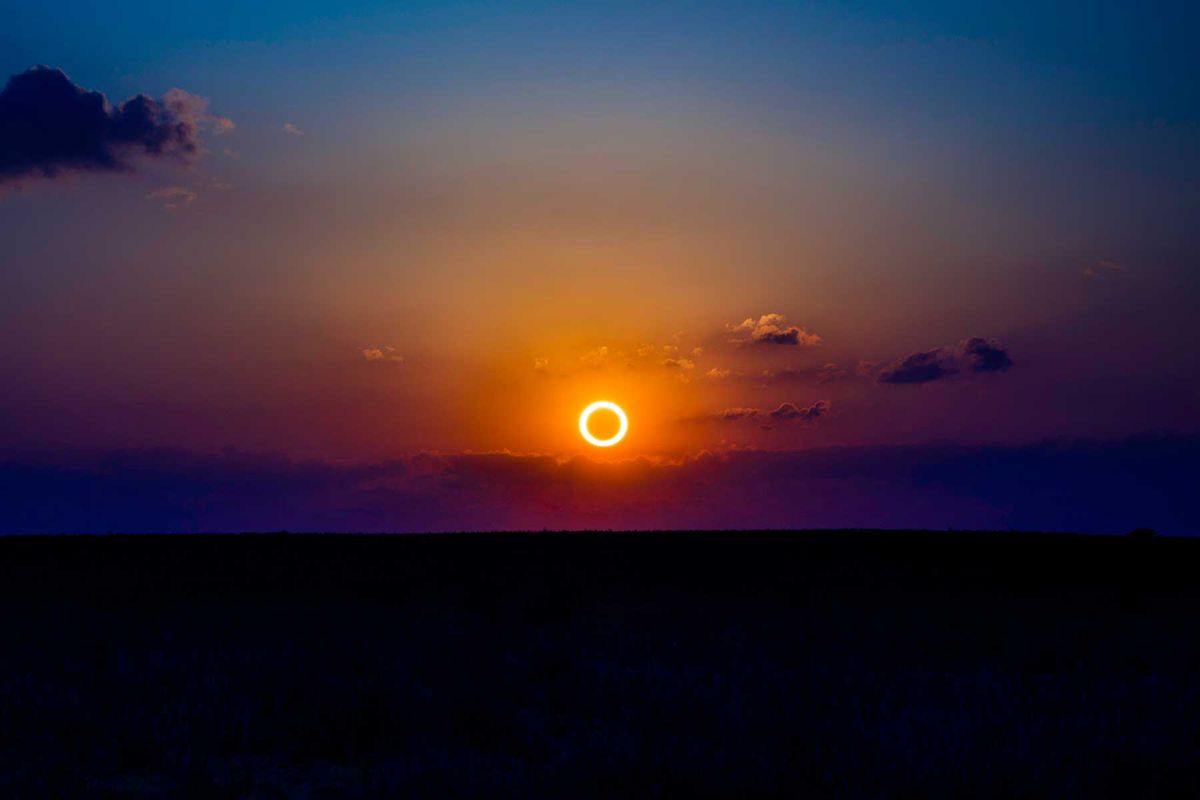
On Thursday, June 10, a huge partial solar eclipse will be visible across North America at sunrise — and that includes parts of the U.S.
In parts of Canada, Greenland, and over the North Pole to Russia, it will even be possible to see a "ring of fire" around the sun. However, everyone viewing the eclipse must use ISO-approved eclipse glasses and solar filters for cameras. That's crucial to avoid damaging your eyes.
It will be the first of three solar eclipses in four years for North America, with another "ring of fire" solar eclipse in 2023 before a spectacular total solar eclipse in 2024 to rival 2017's "Great American Eclipse."
What is an annular solar eclipse?
An annular solar eclipse is a beautiful kind of partial eclipse of the sun where the moon is just a bit too far away from Earth (and too small in the sky) to completely cover the sun. On June 10, a maximum of 89% of the sun will be covered by the moon, so inside the path of annularity —stretching from Lake Superior in northern Ontario through Quebec and Nunavut, Canada — the moon will appear to have a ring of sunlight around it for over three minutes. Everyone else in northeastern North America will see a huge chunk taken out of the sun by the moon.
What time is the eclipse?
This eclipse will happen at, or soon after, sunrise, and last for around an hour. Travel restrictions mean virtually no one will be able to travel to the wildernesses of Canada to see the "ring of fire," though if you're desperate, you could try to snag a last-minute seat on Sky & Telescope's special eclipse flight operating out of Minneapolis-St.Paul airport.
If not, a very big partial solar eclipse before breakfast will be an incredible sight in northeast U.S. states including New York, Pennsylvania, Massachusetts, New Hampshire, Vermont, and Maine, as well as Ontario and Quebec in Canada. For example, in New York, it will be possible to see a 72% eclipsed sunrise with "devil's horns," which in clear skies will be an iconic sight beside Manhattan landmarks. That will happen at 5:24 a.m. EST.
How to See the ‘Devil’s Horns’ at Sunrise
To see the "devil's horns" — two limbs of the sun poking above the horizon – you're going to need to be in the right place at the right time, look in the right direction, and hope for clear skies. The eclipsed sun will rise in the northeast, so either be on an east-facing shore of the Atlantic Ocean or a lake, or get yourself up somewhere high so you can see down to the horizon.
Best Places to See the ‘Devil’s Horns’ at Sunrise
According to GreatAmericanEclipse.com, the best places to see this phenomena are around Thunder Bay, Sault Ste Marie, Toronto, Philadelphia, New York City, and Atlantic City. A slightly different view of one limb of the eclipsed sun poking above the horizon — known as a "shark's fin" — may be seen from Ottawa, Montreal, and Boston.
There are some fabulous resources out there to consult if you really want to get this right. There are useful maps on GreatAmericanEclipse.com, while this interactive Google Map of the event is also essential. There are even Google Earth downloads and a must-see simulation of exactly what you will witness from any town in the U.S.
When is the next solar eclipse in North America?
After the partial solar eclipse on June 10, 2021, North America will have to wait over two years for its next. On October 14, 2023, an annular solar eclipse will strike the U.S. and move through Oregon, Utah, Arizona, Colorado, New Mexico, and Texas before being visible from the Yucatan Peninsula in Mexico, Belize, Honduras, Nicaragua, Panama, Colombia, and Brazil. In the U.S., it will cross many national parks, including Crater Lake in Oregon, Great Basin in Nevada, and Utah's Bryce Canyon, among dozens of others.
Six months later on April 8, 2024, a total solar eclipse will strike Mexico, the U.S., and Canada. The 120-mile-wide "path of totality" — the moon's shadow — will pass over 15 U.S. states and over 30 million people. That could be the most-watched celestial event ever.
Jamie Carter is editor of WhenIsTheNextEclipse.com
Source: Read Full Article










